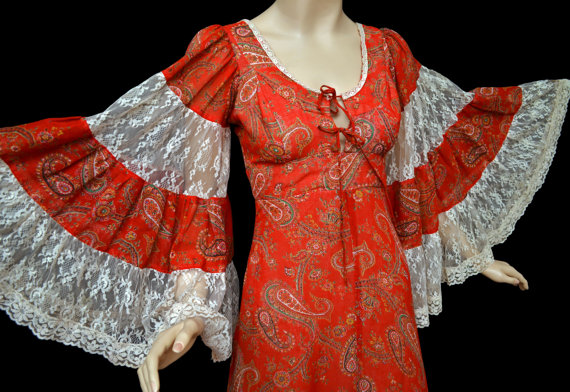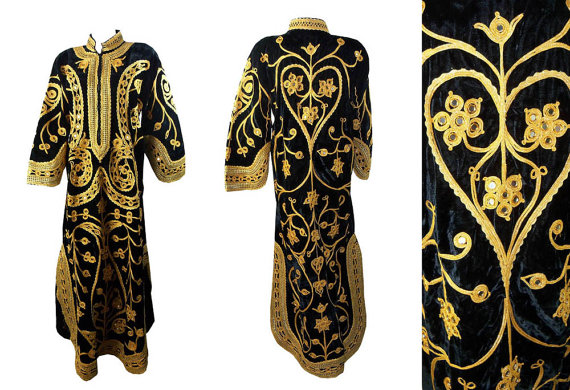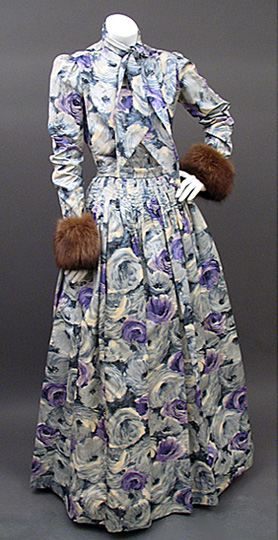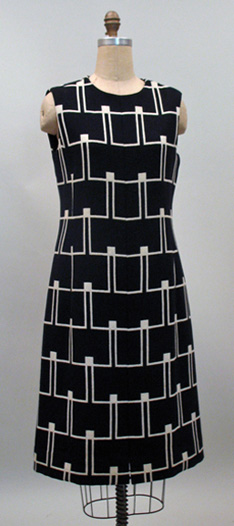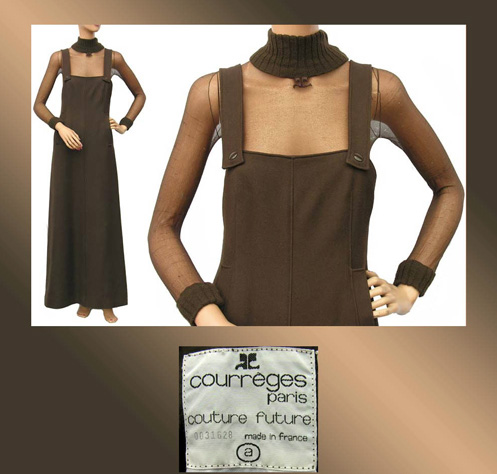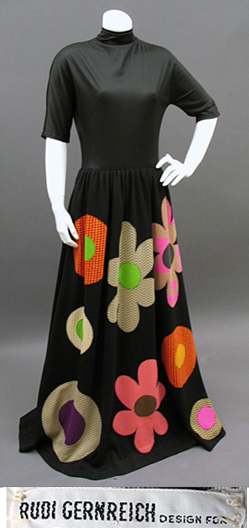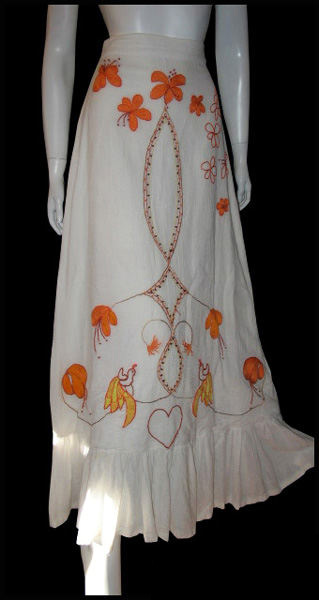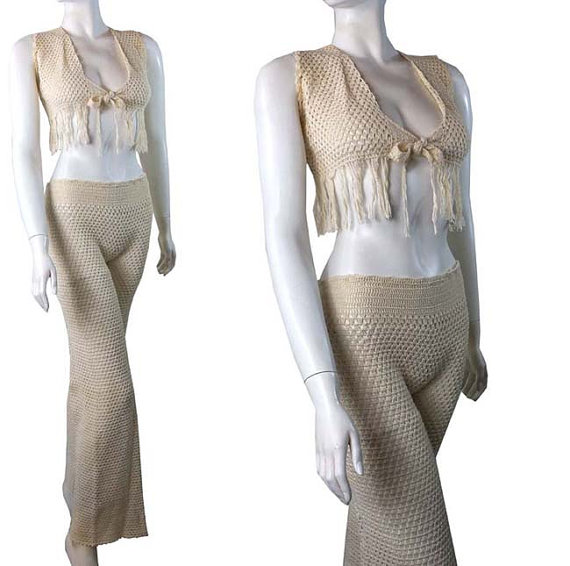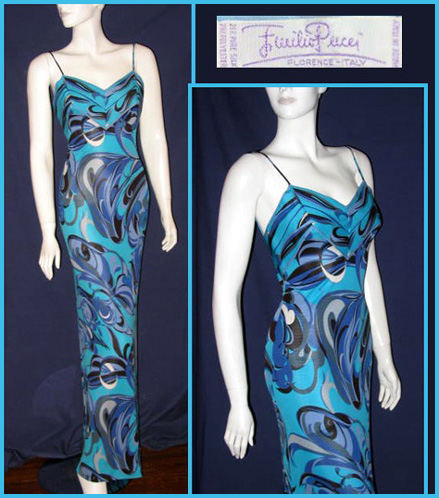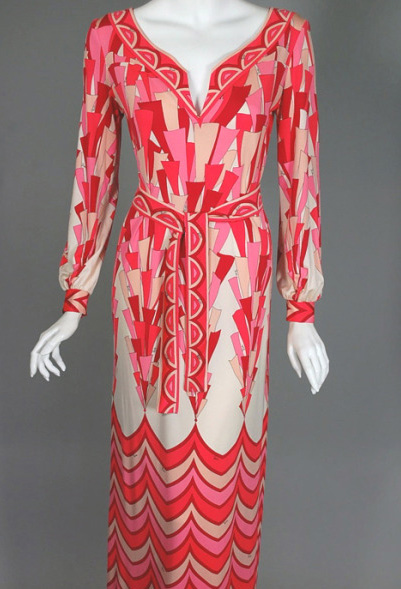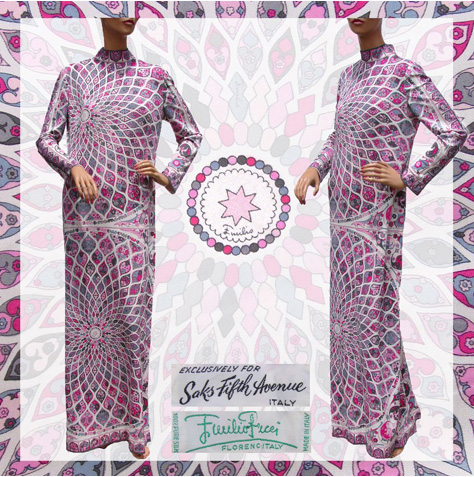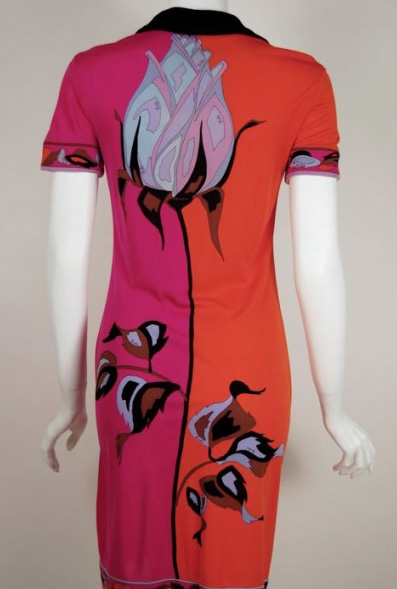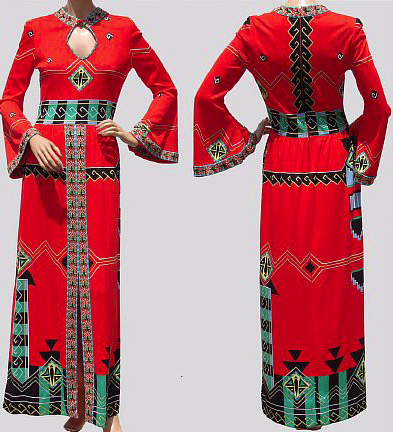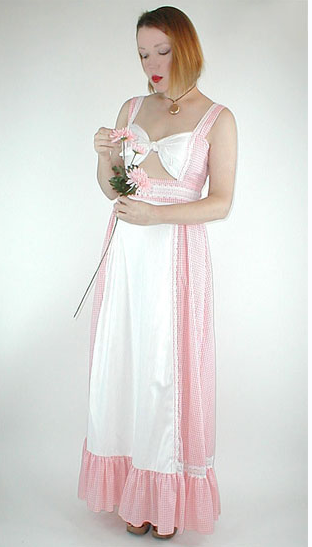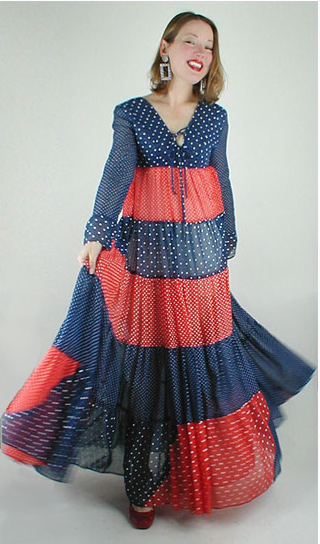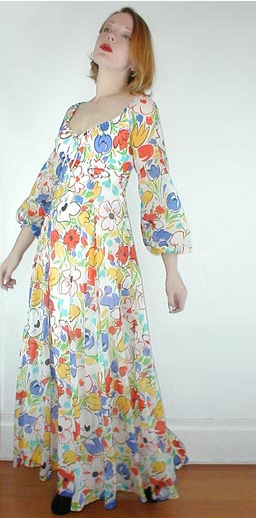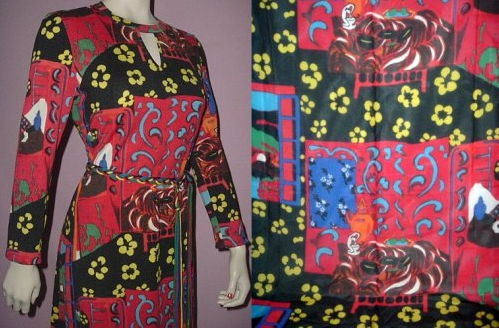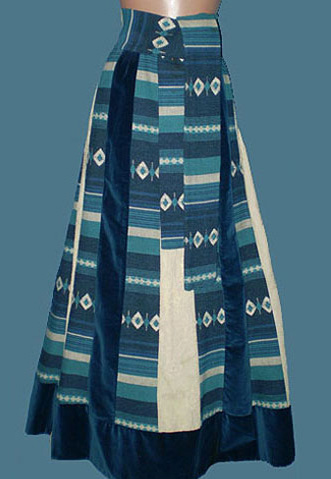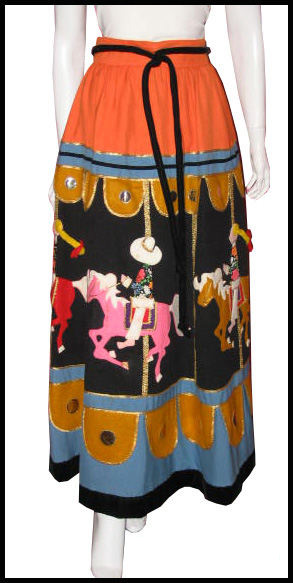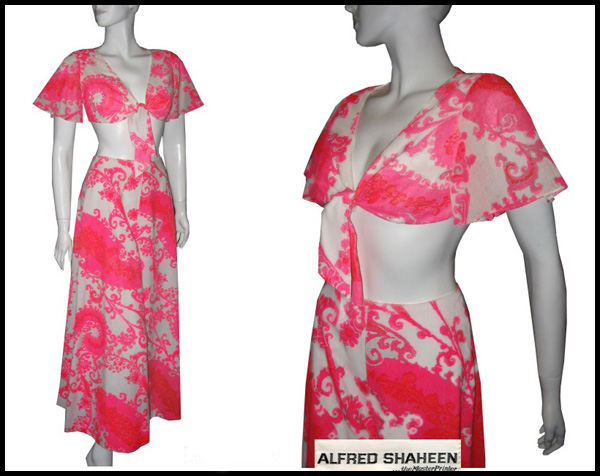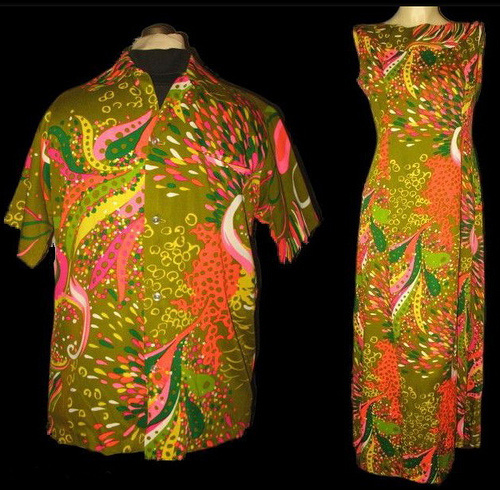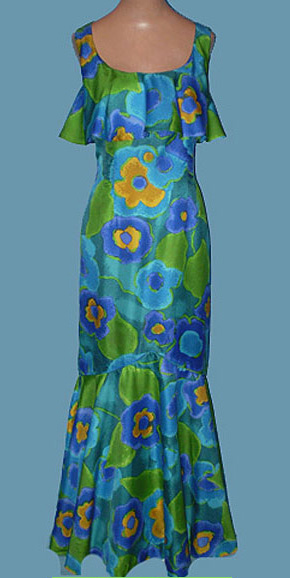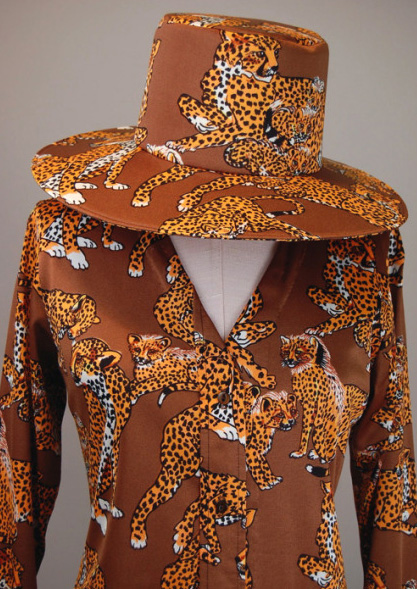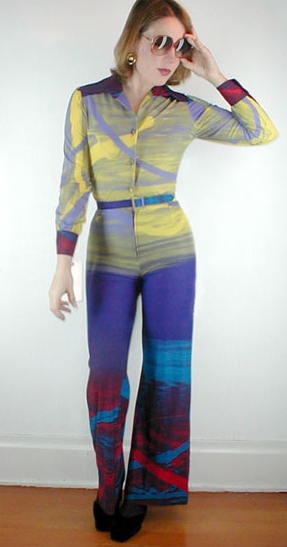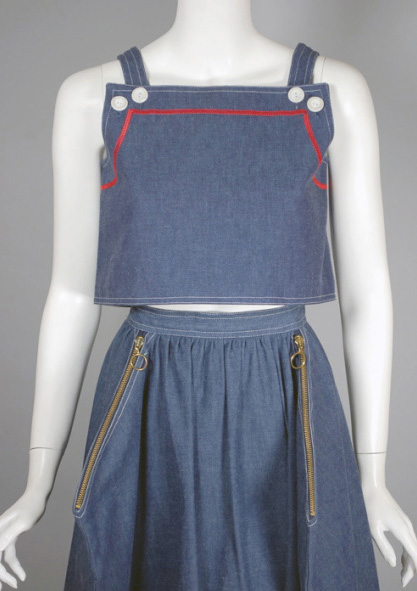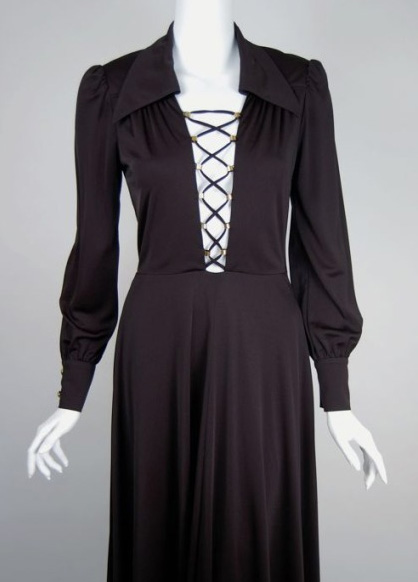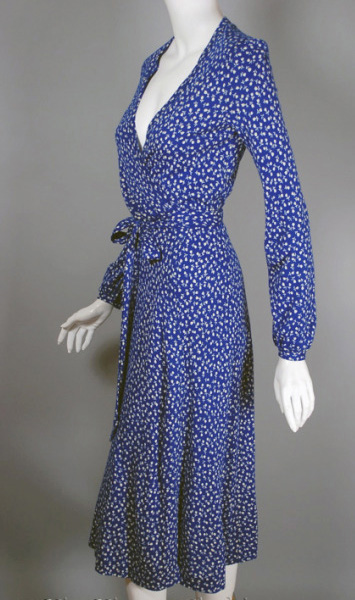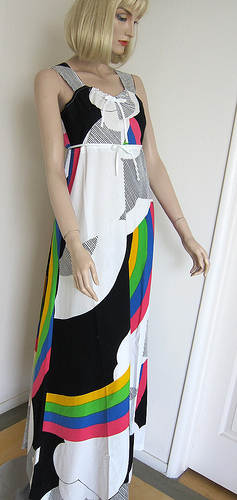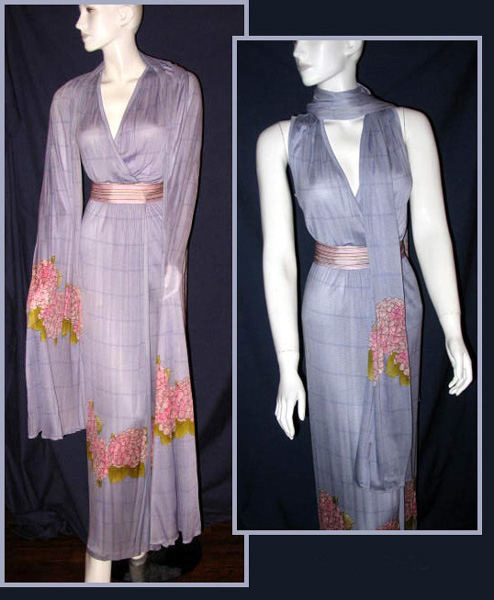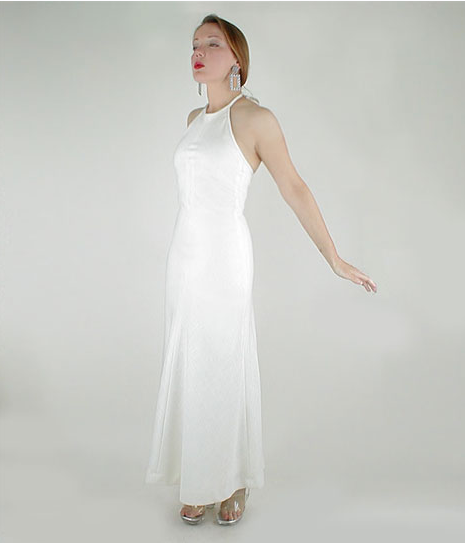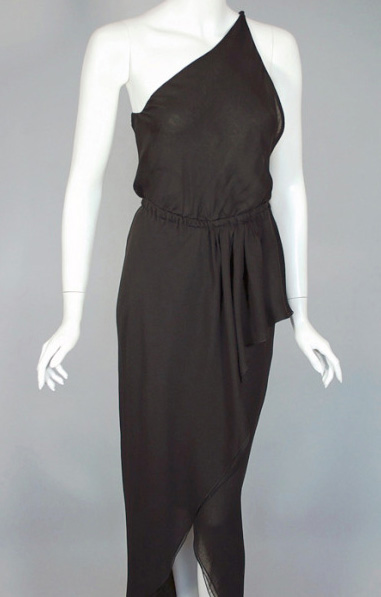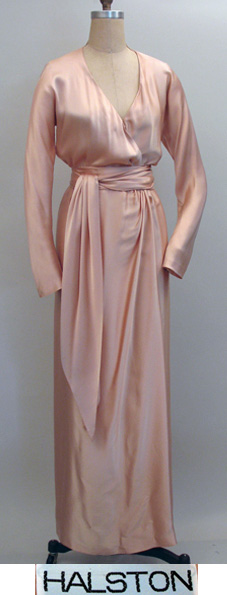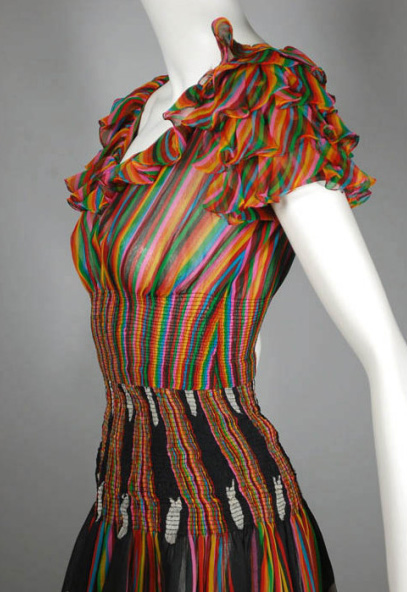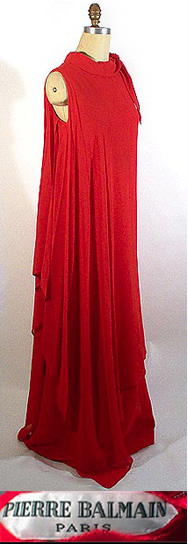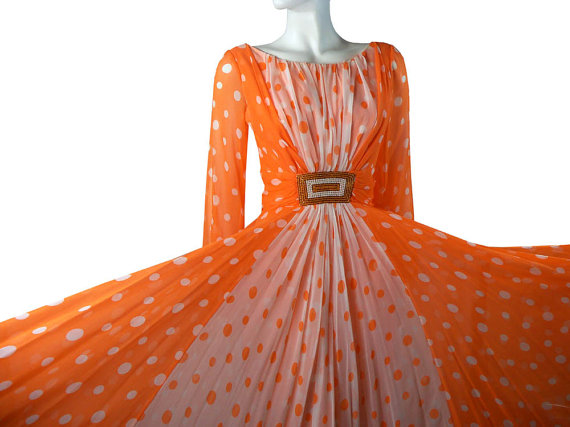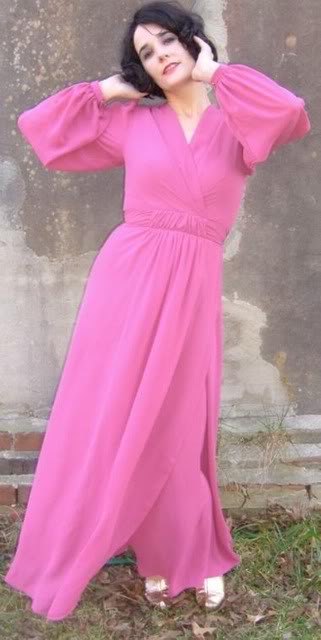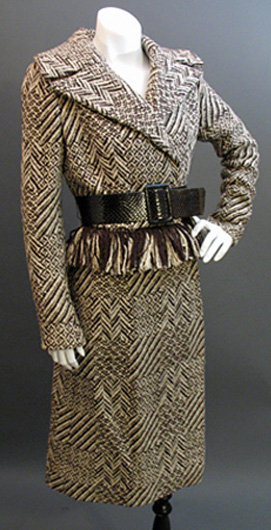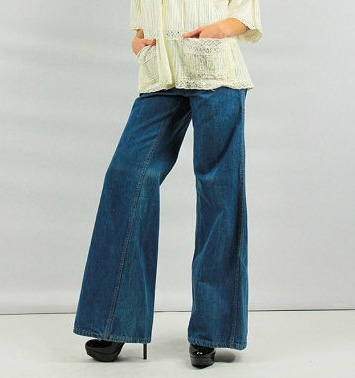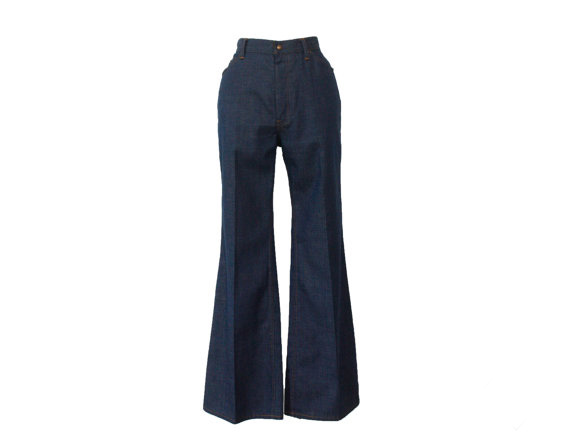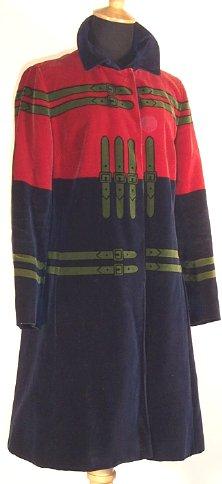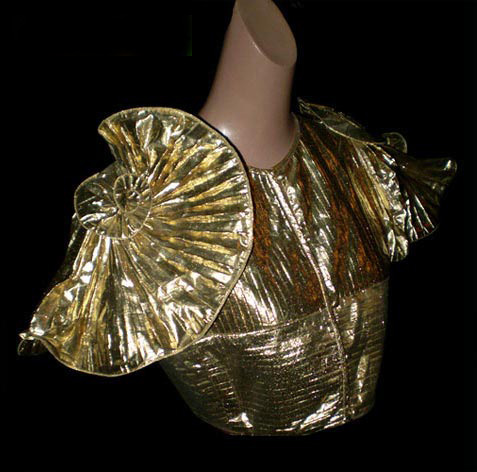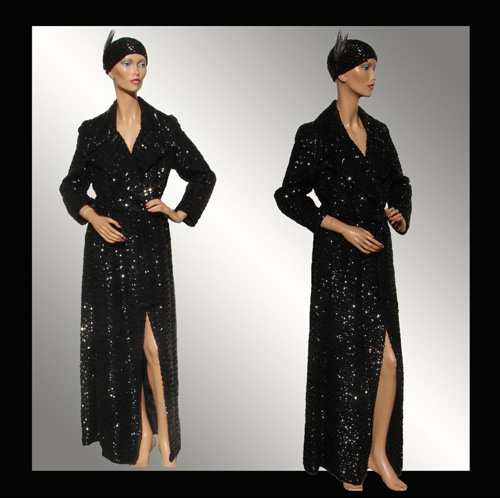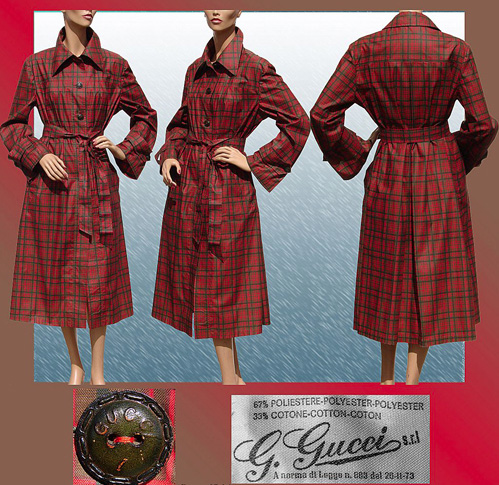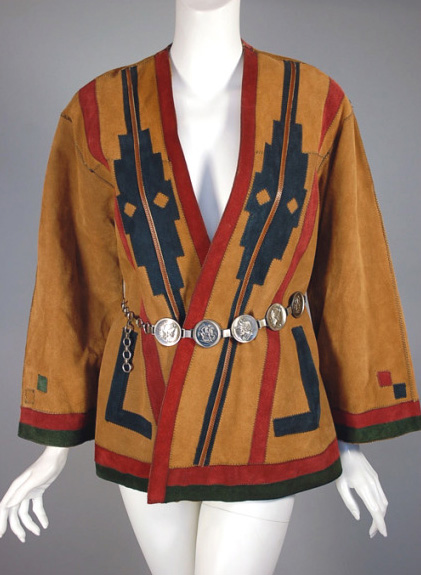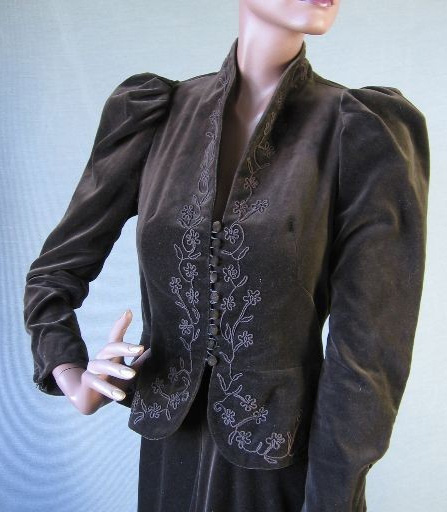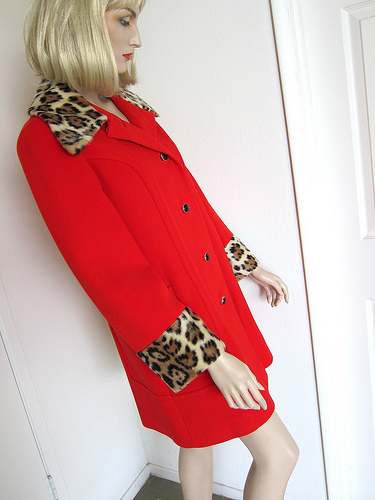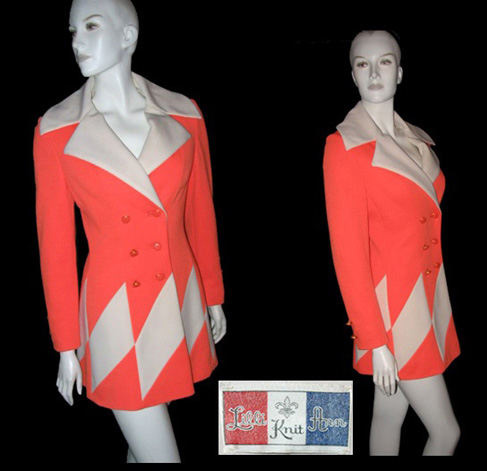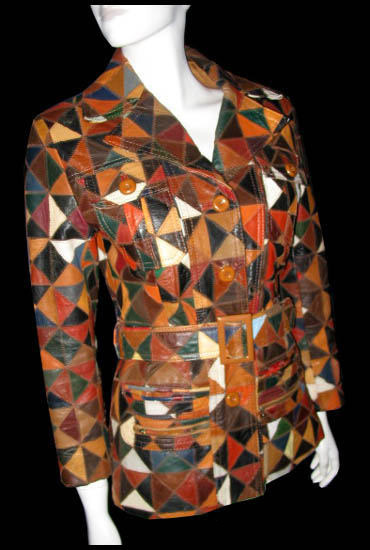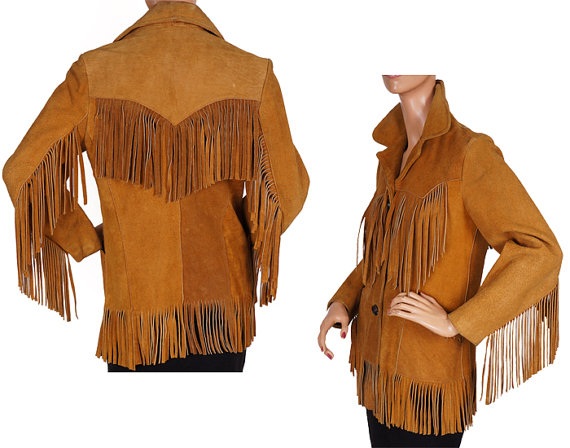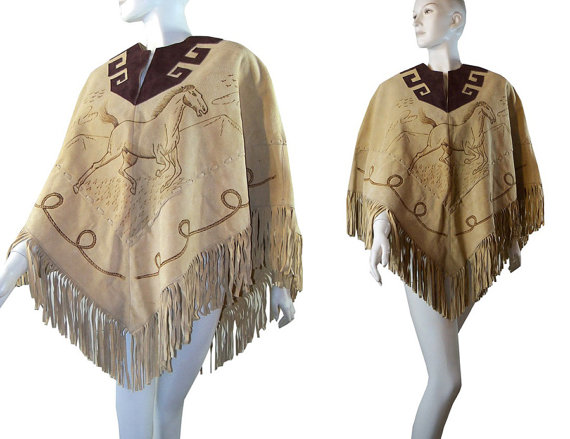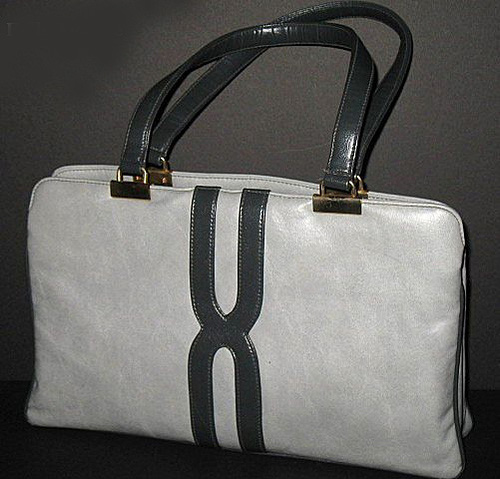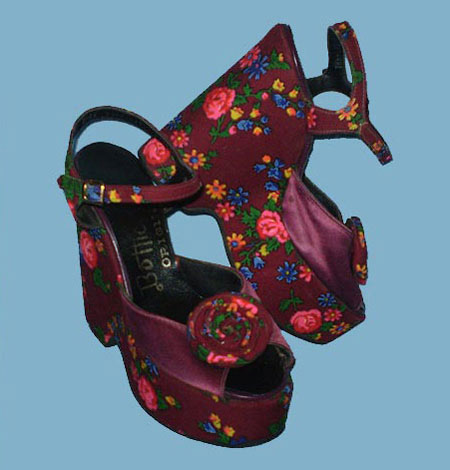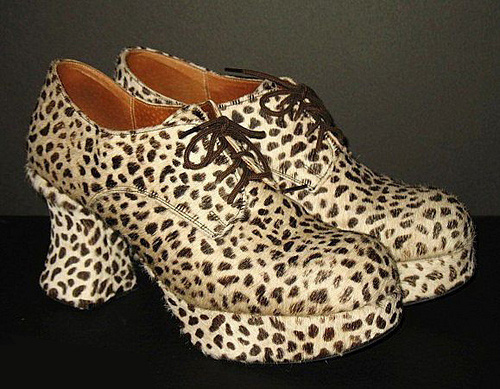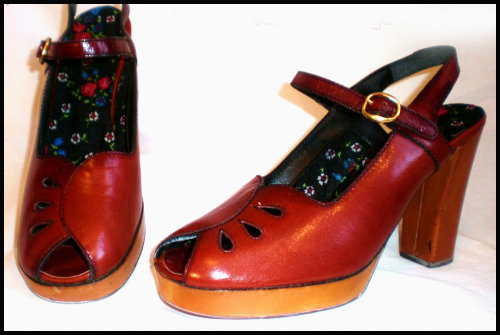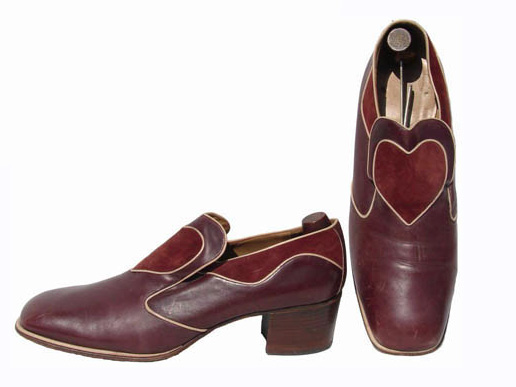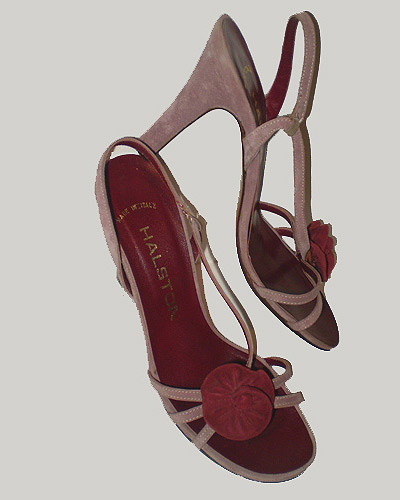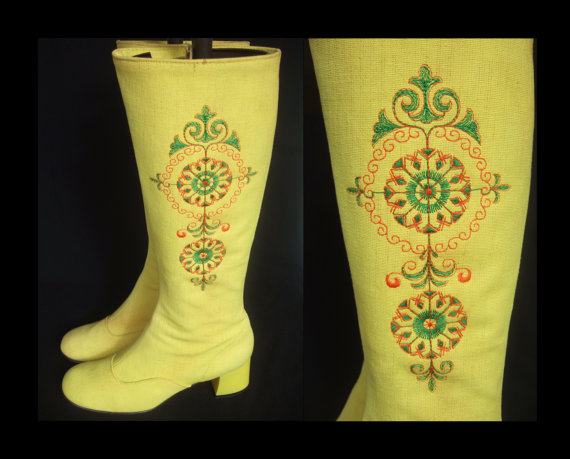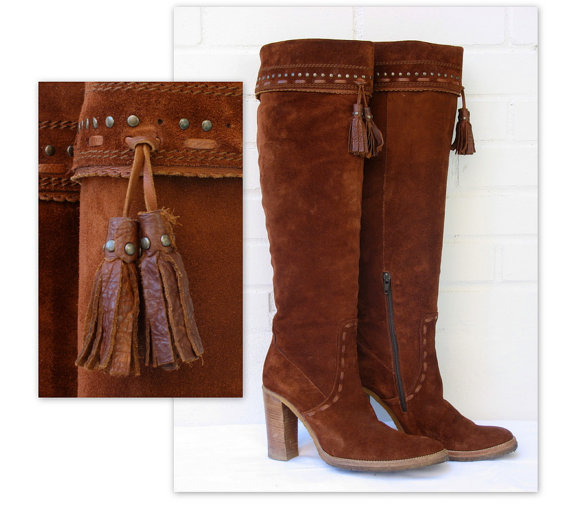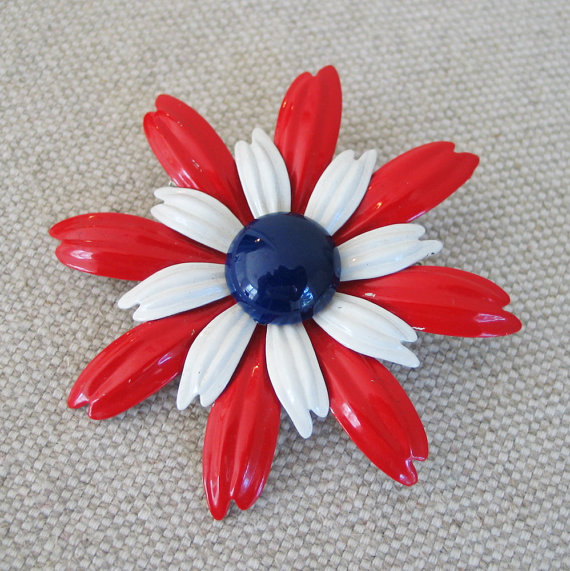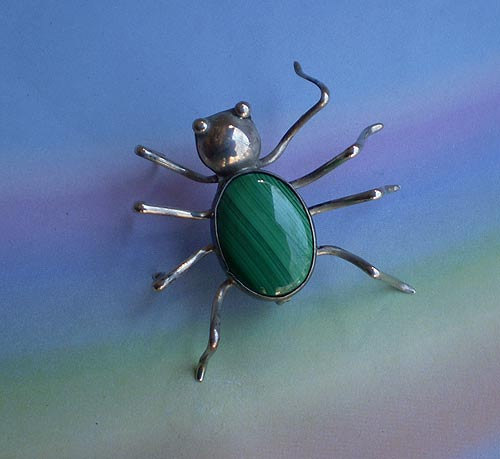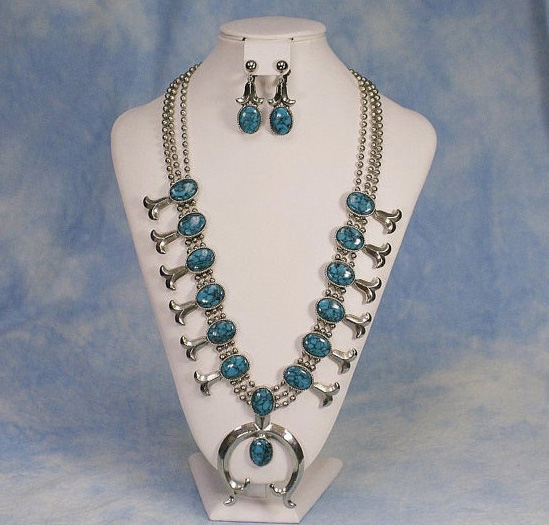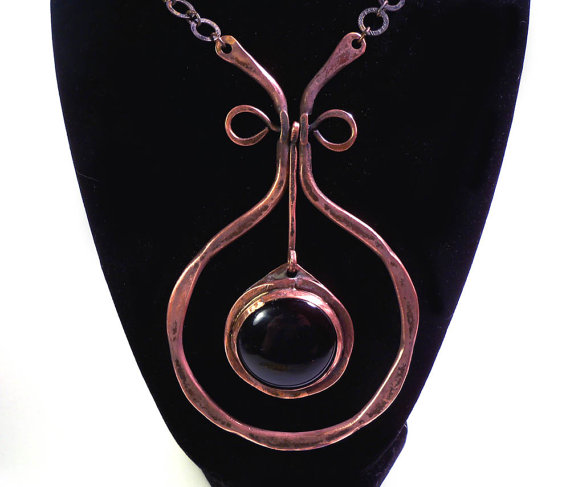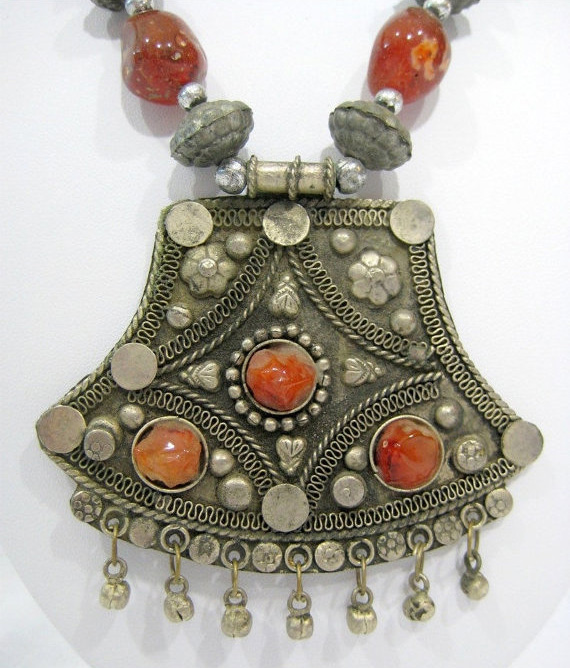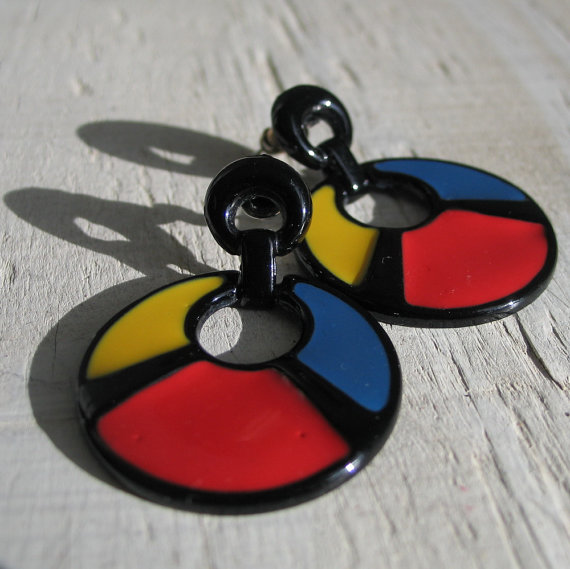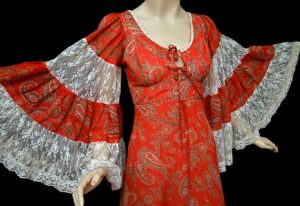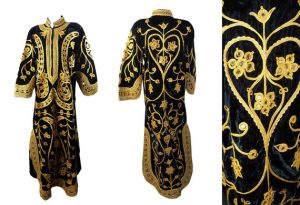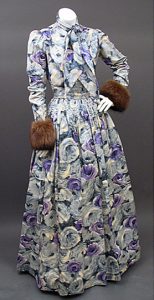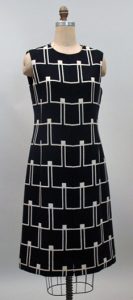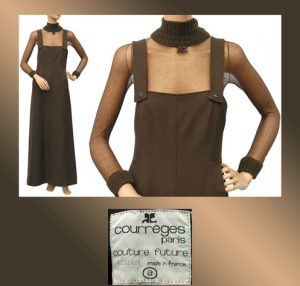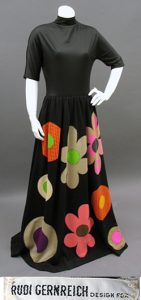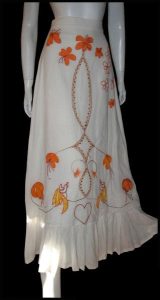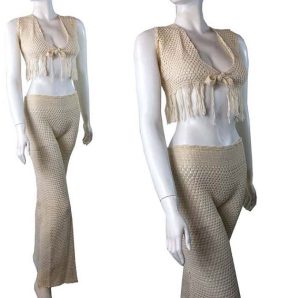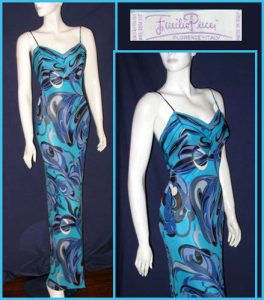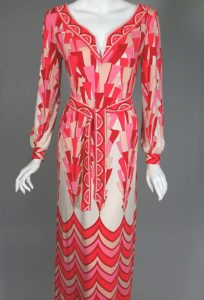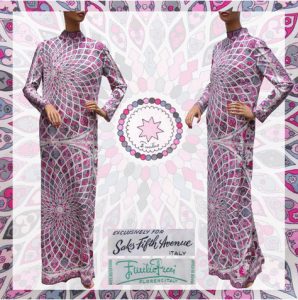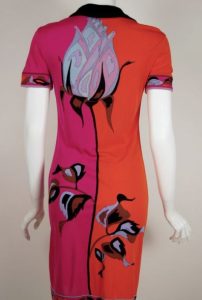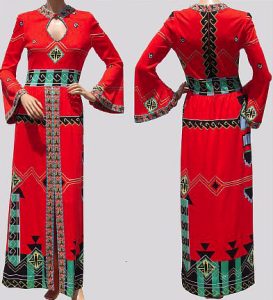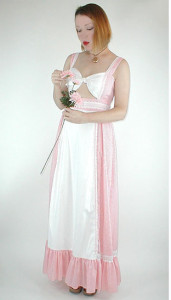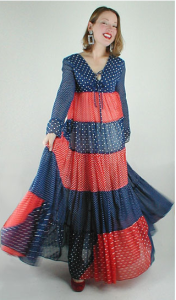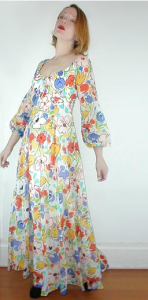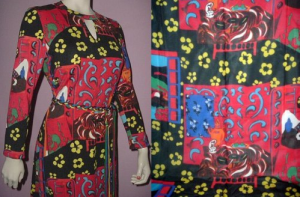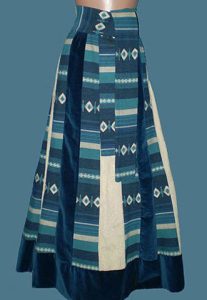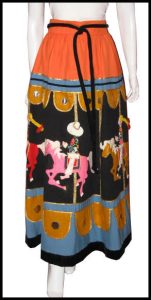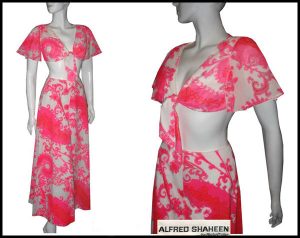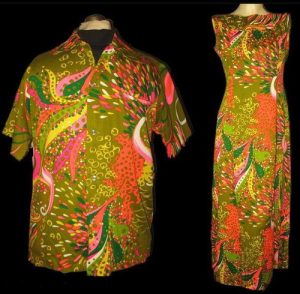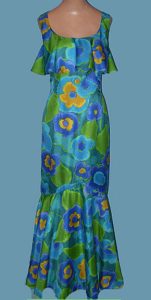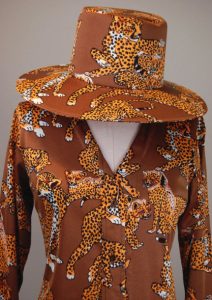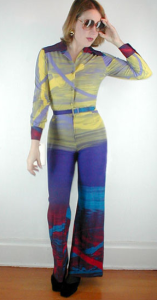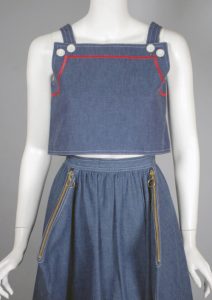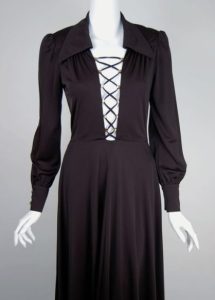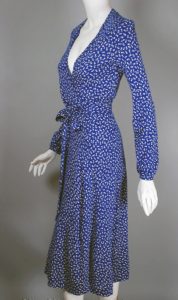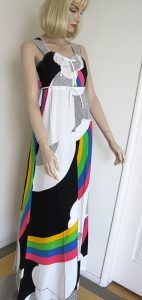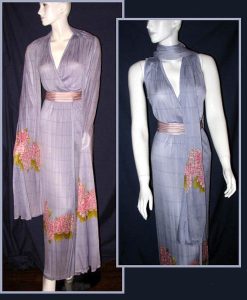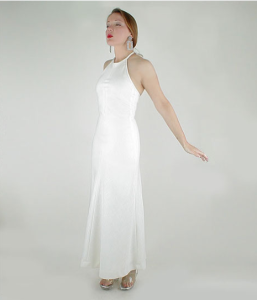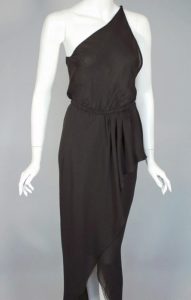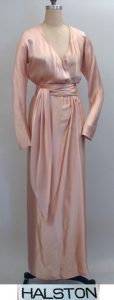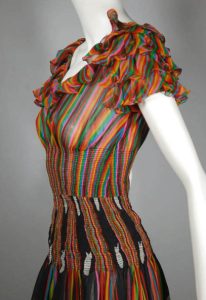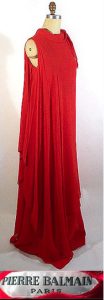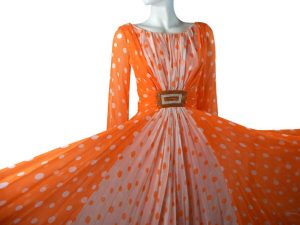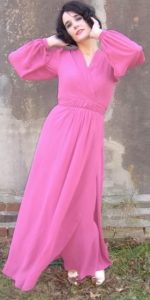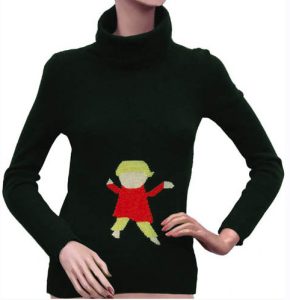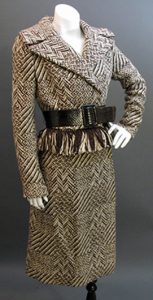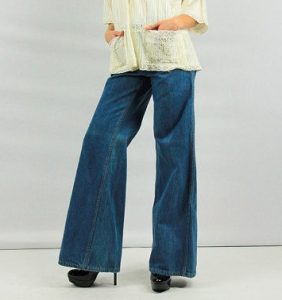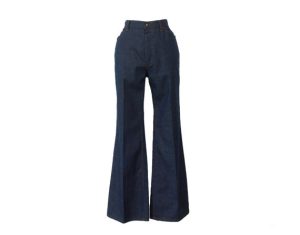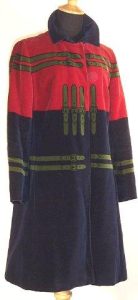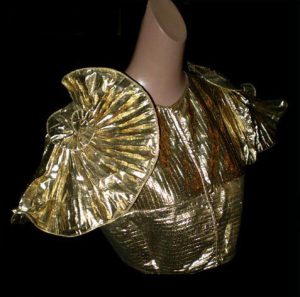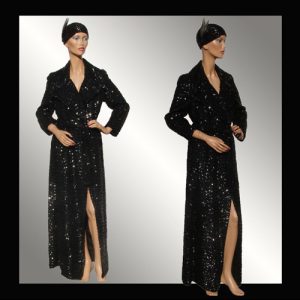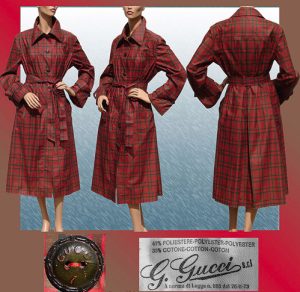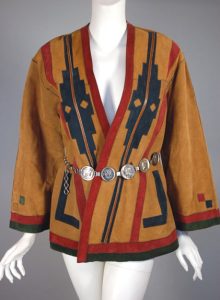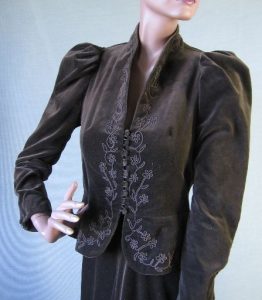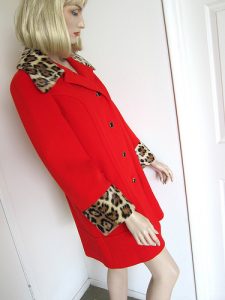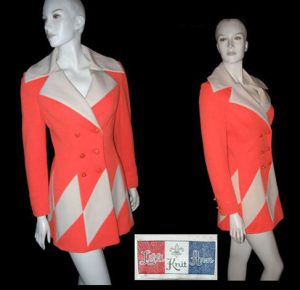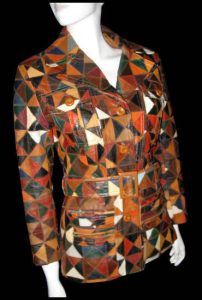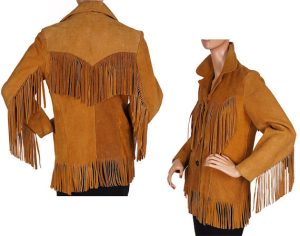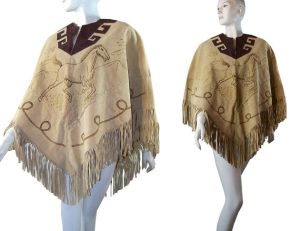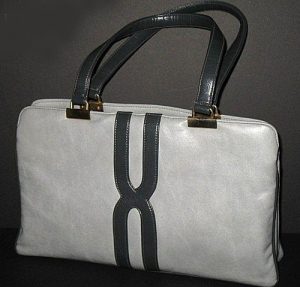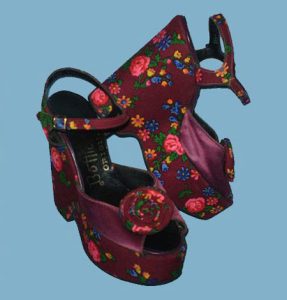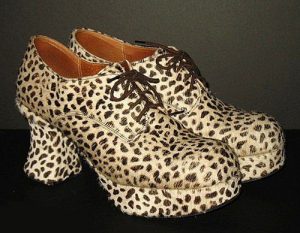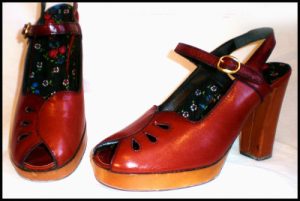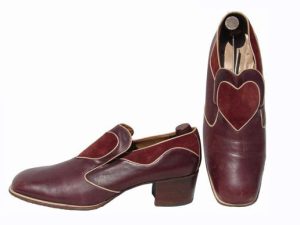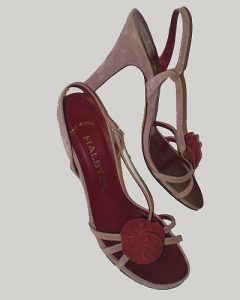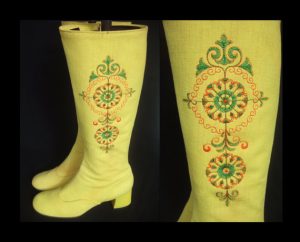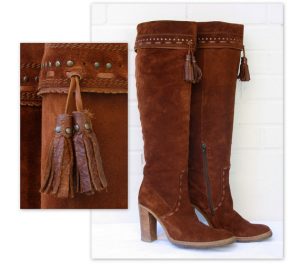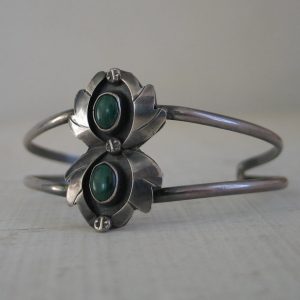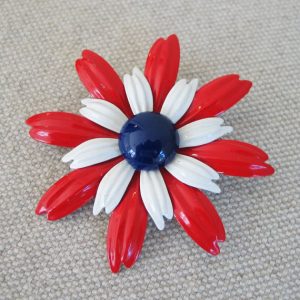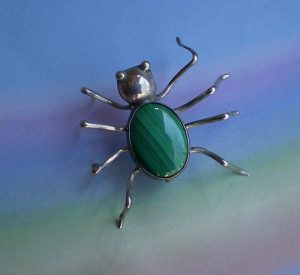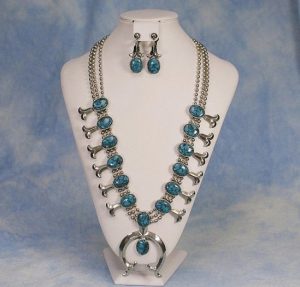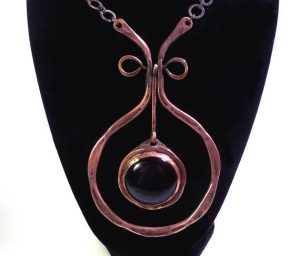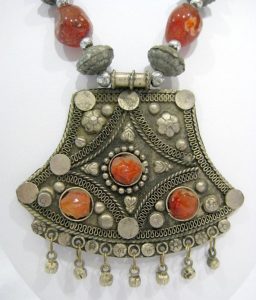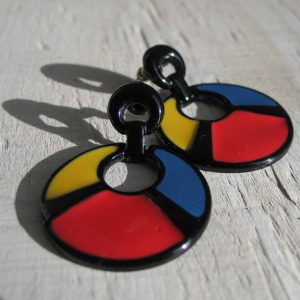The 1970s can be called Decade of Decadence, the ‘Me’ decade and the decade of excess and androgyny. Women emerged in the work place tenfold. Pantsuits, day wear, and separates with a sense of masculine style as echoed in the film ‘Annie Hall’ created a sensation with Diane Keaton wearing a fitted vest with a collared white shirt and men’s neckties. Skirts could be seen in a variety of lengths, mini midi or maxi! The maxi dress was worn throughout the decade in a multitude of styles and shapes. Rich earthy tones dominated in popular colors; warm browns, burgundy, rust, mustard, and avocado green. Television shows such as Charlie’s Angels featured the smart and liberated but sexy woman. The California sun-kissed blondes Cheryl Tiegs and Farrah Fawcett represented the new sporty and physically fit ideal.
The Woodstock festival of peace and music was the end of the 1960s hippie movement, with the U.S. still at war. The hippie flower child look from the late 1960s carried over into the first half of the decade in a nonrestrictive bohemian silhouette with a heavy folksy influence. Thea Porter celebrated ethnic styles in Indian style prints, free flowing breezy gauzy tent dresses and wide legged pants. Arts and crafts elements such as tie-dye, batik, knitwear, crochet and macramé were also very popular. There was a great sense of ease and comfort to early 1970s clothing. Designers like Laura Ashley and Jessica McClintock for Gunne Sax popularized the prairie dress phenomenon.
Blue jeans emerged in the 1970s as everyday wear. Denim was being mass consumed by all ages and seen as the ultimate American garment. Jeans were flared, bell bottom, wide legged, hip huggers, high waist, embroidered, embellished, studded – you name it! Denim was was not just limited to pants: jean skirts, suits, vests, jackets, hats and accessories were omnipresent. Designer jeans were seen as a status symbol and the more expensive, the more desirable! A tighter, second skin fit with designer names such as Gloria Vanderbilt, Calvin Klein, Jordache, and Sasson were branded across the backsides of men and women everywhere. A far cry from the dungarees of years past!
Glam or glitter rock brought on to the scene flamboyant boldly colored clothes in lux fabrics like satins, velvets and lurex. Emblazoned with sequins, bedazzled, gemmed and worn with feathered boas! Nothing was too outrageous. Super high stacked platform shoes or boots were the favored footwear. Pop star David Bowie, as alter ego Ziggy Stardust, sported over-the-top androgynous outfits both on and off the stage. Avant garde designer Kensai Yamamoto was responsible for the otherworldly costumes for the 1973 ‘Aladdin Sane’ tour. Glitter rock stars of the the time such as Kiss, Marc Bolan, The Sweet and the New York Dolls were dandy dressers in chiffon, spandex and satin. Glitter trends in makeup were worn on the face by both men and women. Stores such as Granny Takes a Trip and Biba had multiple locations in the U.S. and the U.K that catered to the teenage audience and rock stars alike.
Disco brought excess and decadence. Designers and celebrities partied with the beautiful people at the infamous nightclub Studio 54 in New York City known for its overt drug use and bacchanalian carousing. Bob Mackie was often called the ‘Sultan of Sequins’ and dressed Cher and other stars in body-baring glamorous costumes. Designer Roy Halston’s draped jersey goddess dresses, kaftans and Ultrasuede were the perfect party clothes for a glamorous night of sin. Quiana polyester was wildly popular and was used in day dresses, shirts, blouses and evening wear. Cheaply made tight fitting body conscious clothing could be seen in any discotheque. Wrap-around skirts, leotards, tube tops, dance wear inspired dresses and separates with ease and movement were made in Lurex, miliskin and spandex. Film star John Travolta wore a white 3-piece suit with black shirt in the blockbuster movie “Saturday Night Fever”. Diane Von Fursternberg popularized the uber flattering jersey wrap dress, which became a staple in every woman’s wardrobe.
Punk fashion evolved alongside the musical genre out of open disgust for the status quo, the modern political agenda and the slick overproduced overtly commercial mainstream that rock music had become. Punk rock stripped rock and roll down to basics. Punk was gritty, dangerous and offensive. The clothing represented a darker and harsher view of reality and dissatisfaction with the ideals of conformity.
English punk visionaries Vivienne Westwood and Malcolm McLaren opened the infamous shop SEX/ Seditionaries on Kings Road and ultimately deconstructed British fashion, mixing X-rated silk screens, bondage gear, vinyl, rubber and the ubiquitous safety pin with iconic English fashions such as plaid kilts and tight stovepipe trousers
Across the pond the American punk look was stripped down to basics, exemplified by bands like the Ramones, Blondie, and Richard Hell and the Voidoids preferring a more laid back look with tight jeans,
leather motorcycle jackets, sneakers, and ripped t-shirts.
Written by CarlaandCarla
